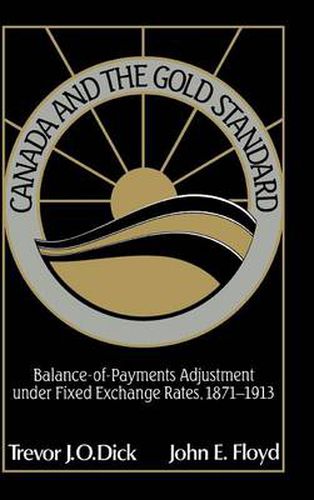Readings Newsletter
Become a Readings Member to make your shopping experience even easier.
Sign in or sign up for free!
You’re not far away from qualifying for FREE standard shipping within Australia
You’ve qualified for FREE standard shipping within Australia
The cart is loading…






In this re-examination of Canada’s balance-of-payments experience under the gold standard, the authors develop and empirically test a new portfolio approach to the mechanism of balance-of-payments adjustment. This adjustment mechanism responded to massive inflows of foreign capital during a critical period of Canada’s economic growth in the early years of the twentieth century. The authors show that the existence of international mobility of capital requires a fundamental revision of the price-specie-flow theory that has traditionally been used to explain adjustment when the balance of payments was more nearly dominated by the balance of trade. The approach taken by Professors Dick and Floyd not only answers the critics of Jacob Viner, who first explored the Canadian case after 1900, but also offers a new perspective on how the gold standard in general actually worked. This new interpretation of the Canadian experience is an extension of the monetary approach to balance-of-payments adjustment that realizes the full implications of international capital mobility. Interest-rate differentials do not drive capital flows, but instead reflect risk premiums set by the exchange of imperfectly substitutable securities of different countries in world-asset markets. Changes in domestic relative to foreign price levels equalibrate markets for goods, but to any fixed exchange-rate system when capital is internationally mobile.
$9.00 standard shipping within Australia
FREE standard shipping within Australia for orders over $100.00
Express & International shipping calculated at checkout
In this re-examination of Canada’s balance-of-payments experience under the gold standard, the authors develop and empirically test a new portfolio approach to the mechanism of balance-of-payments adjustment. This adjustment mechanism responded to massive inflows of foreign capital during a critical period of Canada’s economic growth in the early years of the twentieth century. The authors show that the existence of international mobility of capital requires a fundamental revision of the price-specie-flow theory that has traditionally been used to explain adjustment when the balance of payments was more nearly dominated by the balance of trade. The approach taken by Professors Dick and Floyd not only answers the critics of Jacob Viner, who first explored the Canadian case after 1900, but also offers a new perspective on how the gold standard in general actually worked. This new interpretation of the Canadian experience is an extension of the monetary approach to balance-of-payments adjustment that realizes the full implications of international capital mobility. Interest-rate differentials do not drive capital flows, but instead reflect risk premiums set by the exchange of imperfectly substitutable securities of different countries in world-asset markets. Changes in domestic relative to foreign price levels equalibrate markets for goods, but to any fixed exchange-rate system when capital is internationally mobile.